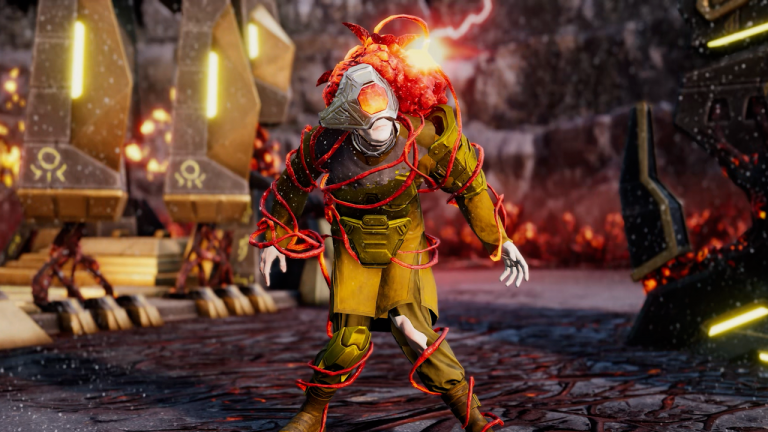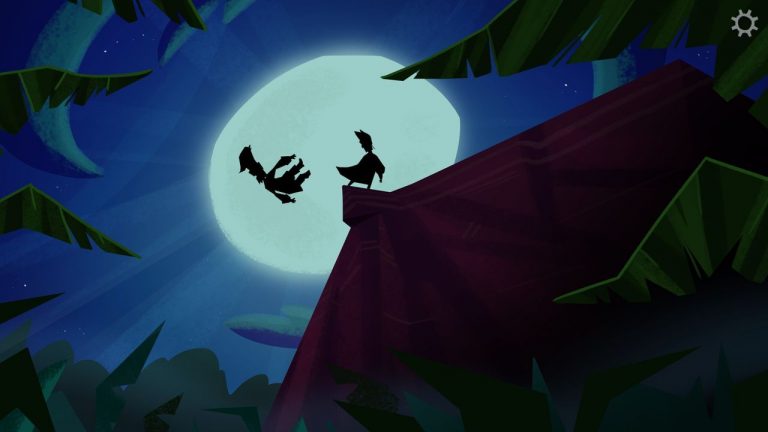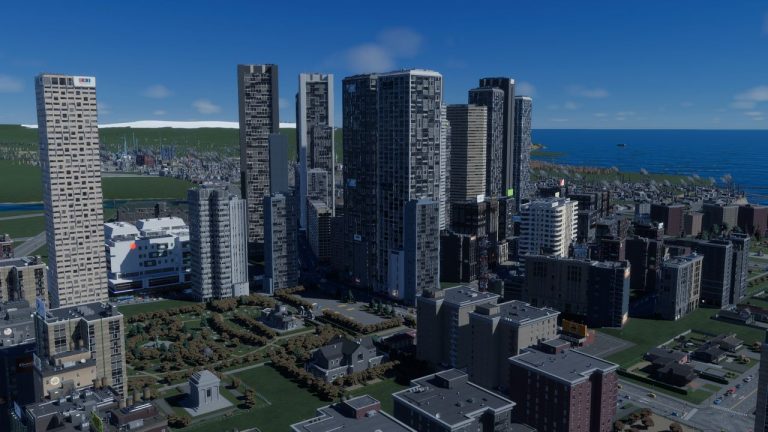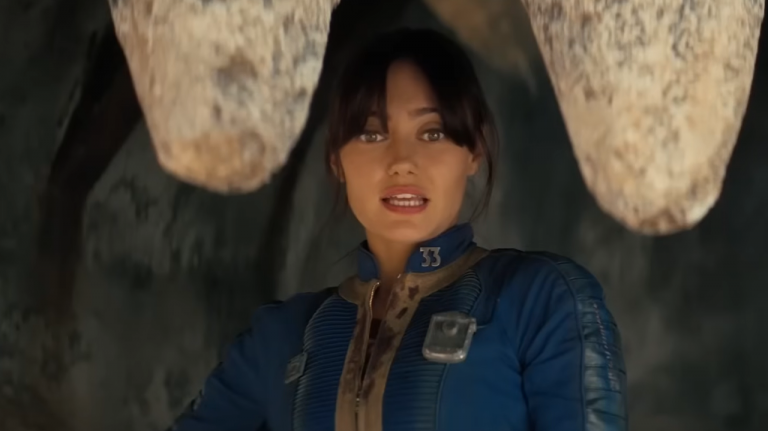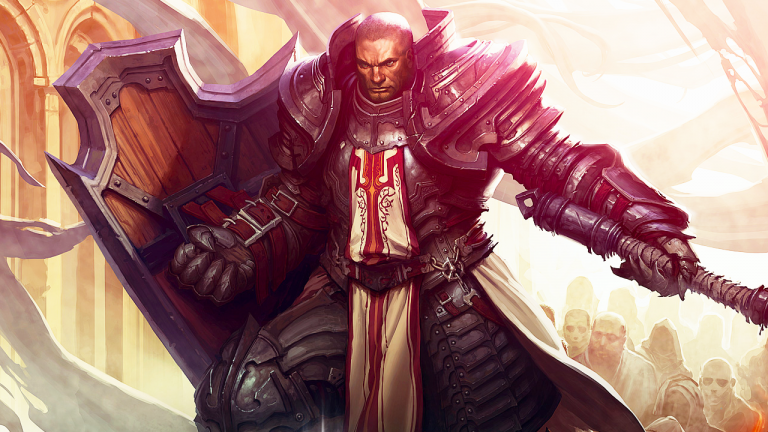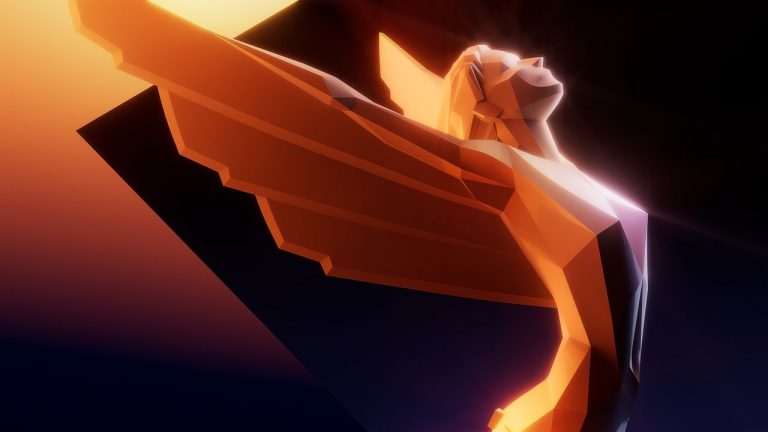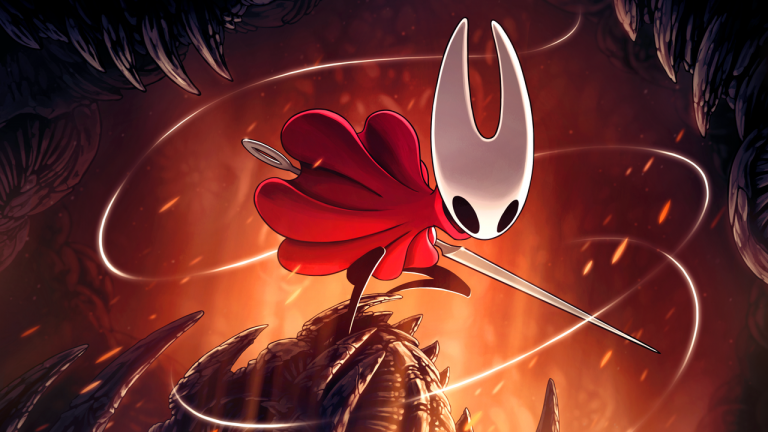What is it? Reflex-oriented downhill skiing that nevertheless manages to feel chill.
Expect to pay $22.49 | £18.89 | AU$36.50
Developer Megagon Industries
Publisher Megagon Industries
Reviewed on RTX 3060 (laptop), Ryzen 5 5600H, 16GB RAM
Multiplayer? Yes
Steam Deck Status is officially “unknown”. It has a Steam Deck setting, though it doesn’t run at consistent frame rates
Link Steam
The creators of my favourite extreme downhill biking game, Descenders, went on to make an extreme snowboarding game, and now the creators of my second favourite extreme downhill biking game, Lonely Mountain: Downhill, have made an extreme skiing game. I’m not going to pretend to be surprised by this: all of these sports are good because they’re fast and dangerous, especially at sharp gradients.
The problem, as I see it, is that bikes are better than the other two, and there are far too few mountain biking games. I love bikes. I love the quiet zip of their cogs and wheels. I love the distinct subtleties of the momentum born of pedalling. For the first couple of hours spent playing Lonely Mountains: Snow Riders, I really wished I was playing Lonely Mountains: Downhill instead. Skis are clumsier than bikes. They don’t get fast quite as quickly as a bike. But I gradually learned the orthodoxies of going fast down technical hills on skis, and once I figured out how to go faster quicker, Snow Riders started to click gloriously into place, to the extent that now I think I love skis more than bikes.
First I learned that to gain speed quickly, I need to go downhill first without crouching, and then tuck in tight to become a human bullet. My next lesson was one the loading screens constantly reminded me about, but I was slow to learn: braking is important. On a bike, brakes slow the bike down, and at super high speeds this is more likely to lead to imprecision if not death. It’s kinda the same on skis, but with the right know-how applied, and with fast reflexes, I can usually maintain my speed while taking some of the trickier pins and bends.
There are a lot more subtleties to learn, such as the benefits of skiing backwards, and the finer details of the trick system, but my point is that eventually I came to love skiing. And you don’t need to learn all of Snowriders’ subtleties to have a good time with it: you can ignore tricks entirely and still get sucked into setting faster and faster times on each downhill course.
Like its predecessor, each of the 12 handmade point-to-point tracks in Snow Riders is viewed from a fixed camera perspective. Sometimes the camera hovers behind my skier, sometimes it takes an isometric view, and quite often it floats ridiculously in front. This lends the Lonely Mountains games a dreamlike cinematic mood, but it also emphasises that these “zen” games have little truck with realism. Snow Riders doesn’t try to be a skiing simulator. It focuses instead on evoking the myriad conflicting moods of high-risk high-reward pursuits. I would describe Snow Riders as a reflex-oriented cosy game with bucket loads of failure.
I realise there’s a category error in that: if there’s a quality that seems to unite “cosy” games, it’s that they usually forego death or any other conventional videogame punishment. In Snow Riders, like in Downhill, you’re probably going to die every 30 seconds or so, at least. In the campaign it’s necessary to complete courses either without dying or within a certain tight time period in order to unlock further tracks and thus progress. This will usually require countless retries before I’ve nailed a record by the skin of my teeth. That’s a lot of pressure, sure, but the pressure is alleviated in two ways.
The first is by avoiding the pressure altogether. There’s a “zen” mode that just lets me muck around on any track I like, even if I haven’t unlocked them in the campaign. In zen mode, I can also place checkpoints wherever I like on a map, which not only eliminates the frustration of repeating difficult sections, but also lets me focus on the primal joy of hurtling fast down hills without death or clever wayfinding occupying my mind. The latter is important in the campaign, because as in Downhill there are usually several ways to navigate any given bend or drop, and finding the most expedient route that I’m skilled enough to pull off is one of the things I love most about this series.
(Image credit: Megagon Industries)
(Image credit: Megagon Industries)
(Image credit: Megagon Industries)
(Image credit: Megagon Industries)
(Image credit: Megagon Industries)
(Image credit: Megagon Industries)
The second “cosy” aspect is just the vibe. As many have remarked about Downhill, Snow Riders is just a gorgeously atmospheric game. Instead of music, we hear the gentle winds of ethereally lethal cliff-scapes; instead of V8 engines, we hear the mushy drones of skidding blades and disrupted snow. The landscapes in Snow Riders have a sense of amplified reality that is both feasible but questionable: sometimes the ostensibly realistic tracks narrow into gorgeously surreal spirals, or turn onto two-storeyed bridges that thatch bizarrely through the otherwise too-rugged expanse. These lapses in realism are all the more effective for their rarity, and they usually arrive without any build-up or warning.
If I were to draw a parallel, it would be with that famous free-gliding sequence in Journey, or more obscurely, with Superflight. The lack of music is important: this is a lucid interpretation of what going dangerously down hills might really feel like, ladled with the blissful certainty that you’ll never break a bone or suffer brain damage. Equally important is that Snow Riders doesn’t try to psyche me out when I fail or overly praise me when I succeed. When I die, the game doesn’t make a fuss about it. When I do something brilliant, my brilliance goes unremarked.
But don’t get me wrong: Lonely Mountains is also an incredibly tough dexterity-testing racer for those who seek challenge, and this sequel places extra emphasis on this thanks to its online competitive modes. There’s a realtime racing mode for up to eight players—no ghosts here, you can collide with your opponents—as well as a cooperative mode that grants six manually placed checkpoints to the team and tasks them with earning as many points without dying as possible, with all points banked at checkpoints. The races feel a lot like the core game, just with other players and end-of-play stat screens full of bragging rights. I can see myself coming to this again and again, though the cooperative mode feels a little at odds with the straightforward unfussiness of the rest of the game.
The success of Snow Riders lies in its minor details: the slow realisation that flat ice surfaces can be a help rather than a hindrance, the gradual hard-earned understanding of airborne momentum, and the fact that each “death” leaves all previous ski tracks in the snow, making it easier to finetune adventurous routes.
Amid all this learning, and all of the rapidfire decisions needed to pull off a successful run, lies Snow Riders’ secret ingredient: the quiet. There’s no effort to compensate for the awkward aural peace of skiing, no burgeoning strings or loud breakbeats. Snow Riders luxuriates in the lofty drone of skis against impossible mountains. It’s beautiful, terrifying, sometimes exhausting, but it never loses its chill. It’s the kind of game I’ll probably play for half-an-hour every month for the rest of my life.



